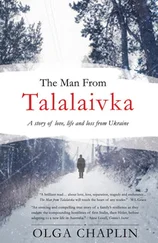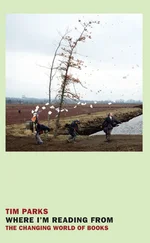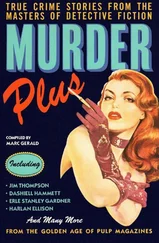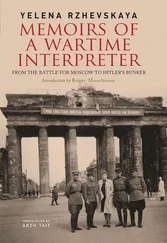To this day no one knows how many people were afflicted by cancers and other illnesses that they would not have gotten otherwise. More than 500,000 participated in the cleanup operation and it continues to this day. An exclusion zone was imposed covering some 2,600 square kilometers. There is an inner core around the plant and the second, wider, surrounding belt. This includes the town of Chernobyl itself, home to a few thousand who now maintain the defunct plant or work on building the new “sarcophagus” to encase the reactor that exploded.
Chernobyl is 120 kilometers north of Kiev. It is in wooded, marshy land close to the border with Belarus, where even more ground was contaminated than in Ukraine itself, because of the way the radiation fell. For Ukrainians, although Chernobyl is, for sure, part of their history, there is no real feeling of the momentousness of what happened. Throughout the country there are monuments commemorating those who died, just as there are to those who fell during the Soviet intervention in Afghanistan, but “Chernobyl” as an event does not loom over the country as do, for example, the events of the Second World War. The reason for this is that what happened here is not an issue which can be fought over zealously and ideologically. It feels almost as though Ukrainians have given the Chernobyl part of their history a collective shrug.
That is a pity. The exclusion zone is one of the most extraordinary places in Europe. You need permission to enter it or you have to be on a tour which has gotten it for you. Entering the zone is like entering another country: you have to show your passport. You also have to be checked off against the list of names of those who have permission to enter for the day.
To the side of the road are abandoned villages, gradually being engulfed by nature. A very few elderly locals have returned. At first the authorities used to turf them out but eventually gave up and allowed them to stay. Research shows that, on average, they live longer than those who were evacuated and never came back, perhaps because they are happy to be pottering about in their own homes, weeding their own vegetable gardens, even though the fruit and vegetables they grow can be contaminated. Indeed, while some of the area is still contaminated, it is only in patches, and much of the zone is now no more radioactive than anywhere else. Chernobyl town feels empty as it has so few inhabitants, and it is an unexceptional place. Most of those who live here are authorized to do so because their work is somehow connected to the continuing cleanup. The town is actually 15 kilometers from the plant, but when the nuclear station was begun in 1972, it was felt demeaning to call it by the name of Kopachi, a nearby village, and since Chernobyl was the name of the wider district, this is how it got its name.
The area is part of the Polesia region which stretches from Poland across southern Belarus and northern Ukraine into Russia. Chernobyl’s recorded history goes back to the Middle Ages when it was a little town, trading on the banks of the Pripyat River. In 1897 almost 60 percent of its population was Jewish and it was the home of a Hassidic dynasty. Today the followers of this branch of Hassidism come on pilgrimages to the restored tombs of their tzadiks , or righteous ones. On May 9, everyone who once lived here can return to meet old friends and visit their family graves. The explosion altered not just the history of the world in general but, in the most profound way, that of the 200,000 or so people in Ukraine who lived here and who lost their homes. Others lost their homes in Belarus and some even in Russia too.
Arriving at the plant you see the cranes surrounding two unfinished reactors, just as they were on the day they stopped work. They stand next to the lake-like cooling pond. Throw bread into the water and soon it is gone, gulped by giant catfish, the size of a man. They are not mutants but simply grow this big because fishing is prohibited as the water is contaminated. Sometimes people still fish though. The plant itself is unremarkable. It looks like what it was—a nuclear power plant. The block that blew up is encased in concrete but it is deteriorating and the concrete is beginning to crack. So, a huge hangar-like structure is being constructed next to it, a vast, arched affair on rails. When it is completed it will be rolled over the old reactor and then work will begin underneath this new sarcophagus to dismantle the old one and dispose of the radioactive material still entombed inside it. It is due to be finished in 2017 and will have cost some €2 billion. According to the European Bank for Reconstruction and Development, which is coordinating the funds for the shelter from the EU and forty-two other countries, it would be big enough to cover St. Paul’s Cathedral in London or Notre Dame in Paris.
Three kilometers away is Pripyat. Unlike the town of Chernobyl no one is allowed to live here. Even if you have seen pictures or film of this abandoned town, which once housed 49,000 people, nothing can prepare you for the reality. Trees and undergrowth are slowly taking over this utterly silent place. Wide roads have become narrow as earth encroaches. As Pripyat was a new town, founded in 1970, it was all blocks of flats and large municipal buildings. In the school, books and toys and everything else you might find there lie scattered on the floor or on the shelves where they were left. It is extraordinary that in buildings with smashed windows open to the elements, everything has not rotted or simply been blown away. In the kindergarten in Kopachi, one of only two buildings not to have been bulldozed here after the explosion, a letter on the floor reads:
Application
I request that you admit my child Kostuchenko Maryna Mykolayivna, born 28.08.1982 to kindergarten from 01.03.1984.
The letter paper is decorated with a little print of a statue of a lady wearing a flowing gown. Nearby are metal bunk beds for the children’s naps and an official portrait of Konstantin Chernenko, the virtually forgotten, grizzled old Soviet leader who led the Soviet Union from February 1984 until his death thirteen months later. In the center of Pripyat, by the decaying dodgem cars, is a Ferris wheel which was due to be officially inaugurated a few days after the disaster. Today fans of the video game S.T.A.L.K.E.R., in which you can fight human mutants in Pripyat, make pilgrimages here, and the uninitiated, thinking they are about to have their photo taken underneath it, are doused with rainwater as the lowest carousel is swung above their heads.
Across the street you can climb to the roof of a sixteen-story building and see a city slowly disappearing amid a sea of trees, almost like a lost Inca city in the jungle. You can wander in flats and see the beds and furniture people left behind on the day they were evacuated. Everywhere there are piles of pipes and electrical fittings. Some of the metal has been taken out legally, but much has been cut out by looters who then for some reason abandoned their hauls. Some of this is due to corruption. When exclusion zone bosses change, some looters may lose their protection, which is then bestowed on others.
From the top of the blocks you can see the plant and the colossal Duga-3 military radar. It is a complex structure divided into two separate vast metal grids which look like some extraordinary art installation. Together they stretch 2,460 feet from end to end, one part is 480 feet high and the second is 295 feet. This was a Soviet “over-the-horizon” system designed to give early warning against incoming intercontinental ballistic missiles. It was one of two; the second was in eastern Siberia. Because it transmitted a strange tapping sound that interfered on certain radio frequencies which could be heard in the West, it was dubbed the “Russian woodpecker.”
Читать дальше












